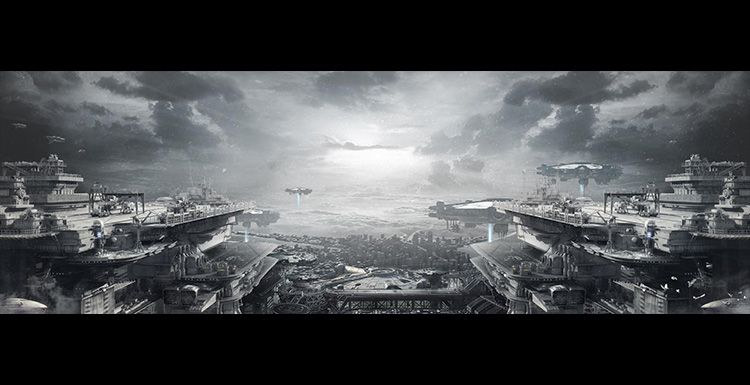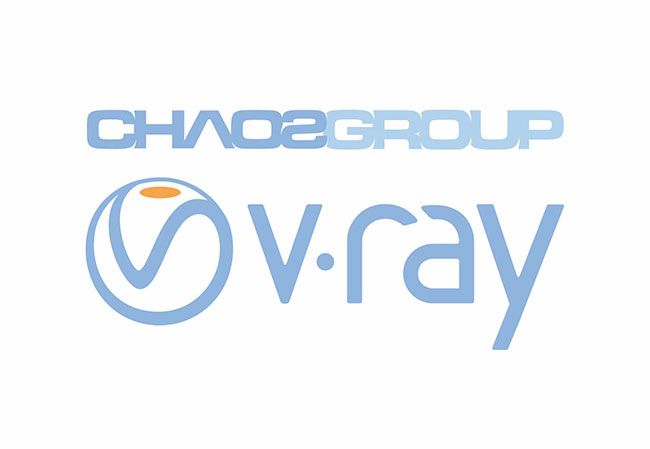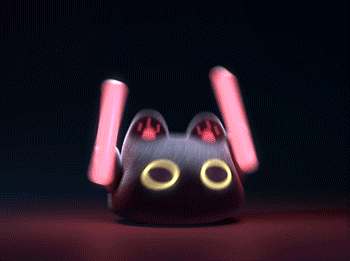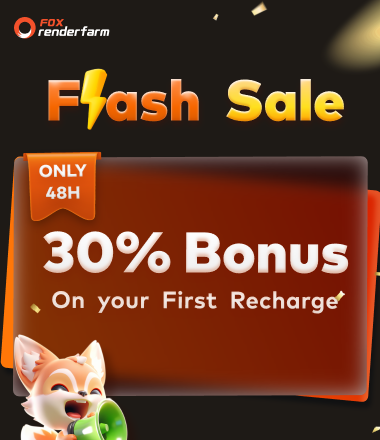Behind the Scenes: Demon Warrior Character

Hey, I’m Dong Chao. I used to work at the Industrial Light & Magic (ILM), Lucasfilm's VFX and animation studio in Singapore. Now I am a professional freelance artist and have long been involved in role-related work. This time I want to share some of the production process and experience of a 3D CG character produced in the project. I hope to help everyone. The software and plugins used in the production are Maya, ZBrush, Mari, UVLayout, Photoshop, shave and hair cut.
- Material collection:
Material collection is an important step. The more time you spend collecting material, the fewer mistakes you will make later. When creating the model of Demon Warrior, a large number of real materials and works references were collected using the Internet. In the design stage, I imagined that he was in ancient times, but did not have any obvious characteristics of the times, so I wanted to make some breakthroughs in the traditional dressing features of ancient China, and portray more mysterious patterns. I also tried brushes with different touches, and finally unified the whole character to make it feel complete. The following is part of the collected materials, put together for your reference.

- Basic model
The production of the model is based on a ready-made human basic model. After adjusting the proportion on it, the creation of all props and clothing is quickly performed. According to the size of the volume, start with the large-scale model parts first. The overall feeling of the character is shaped in the time, it is convenient to modify the proportion, and try to be as clean and even as possible on the wiring without having to portray too many details. But pay attention to the large turning and thickness of the armor, so that it is easy to sculpt later. If you need a large number of copies or later symmetrically sculpted objects, you can make them in the center first, and then copy and adjust the position to observe.

Regarding the cloth elements on the character, you can directly model and sculpt according to personal habits, and also use Maya's cloth system to solve. The benefits of the solution are more natural and achieve better folds with a lower number of faces. effect. The disadvantage is that it can't control the details of the folds more accurately than ZBrush. Because the character's cloth shape is relatively simple, the cloth solution method was chosen.


The hair of the character is made using Maya's nHair. In the early stage, the hair shape of the character needs to be built with polygons. The brush function built-in Maya can quickly convert the curve into the overall effect, and then copy the curve to create more rich changes. The second layer of thin curved surface will get more change and more natural hair effect in the later stage.

3.ZBrush high model production
ZBrush sculpting has always been my favorite link. Especially for this kind of project that needs to design a lot of details, I can boldly sculpt in ZBrush. The early materials have helped a lot at this time. When sculpting, generally according to the importance of the character, starting from the whole, first make some parts that account for the largest proportion of the character. Each part is a SubTool to facilitate later modification. Using different brush settings, you can sculpt the desired The detailed effect, whether it is a prop or a character, first make a large structure, and then refine it.

When creating some continuous sculpts in ZBrush, you can use Maya to make some elements first, and then convert them to alpha in ZBrush and map them directly to the model with UV. If the position is not perfect, you can import the model into Photoshop. Aligning alphas without sculpting one by one, it will take a lot of time.

ZBrush sculpting is the most detailed link in the entire model. People who have been using ZBrush for a long time suggest to establish their own familiar UI interface environment and their own custom brushes, which can greatly improve the production efficiency and effect during the production process. When sculpting a character, the collected alpha channel was used to portray the details.



- Model integration and UV
Export the lowest level of all models in ZBrush, and then use UVLayout to get a good UV splitting effect quickly. You only need to adjust patiently here, place the seams where you can't see as much as possible, and minimize the screen. UV stretching of the main part.
The model after splitting through UVLayout can be conveniently managed and laid out in Maya. All the models that need to be copied before sculpting and not sculpting are all arranged, because the number of final parts is relatively large, in order to bake the map faster For the convenience of drawing textures and adjusting materials, try to put objects of the same material in a UV unit.

Import all the determined UV models one by one into ZBrush in the order of SubTool. It should be noted that models exported from ZBrush can no longer be merged, split, or changed in topology. Otherwise, the models in ZBrush cannot be replaced.
Finally, you can set the baking texture in ZBrush. You can choose the texture you want to output. Here, only the displacement texture and the normal texture are baked. Because it is batch baking, the SubTool shows that you want to bake in one. Post the model on the map, ZBrush will automatically bake all and merge. The following are the parameter settings and the final results of the two posters for your reference.


- Map drawing
Next, start to create color maps for each part. First, a set of texture maps for men was selected for the body part. Using Mari's powerful texture mapping, a lot of details on the map are well retained.

Then import all the drawn layers into Photoshop to change the skin, draw some exaggerated details such as pores, dark spots, dust, etc. When drawing details, try to use high-resolution maps for drawing.

Finally, using some patterns made in PS, map Mari to the character's body according to his own design. In the end, it is still necessary to retain the transparent channel of this layer to facilitate later layer material adjustment.

The metal part is first imported into a material, and then the wear, scratches, smudges and other details are drawn in the Mari with a brush or material. Use Mari for hierarchical management. In the process of drawing, you can create a new mair shader. Simple Adjusting the material parameters for observation, you can also create a normal channel, import the previously baked normal maps and observe them to describe the details more conveniently, and then import the PSD into Photoshop for detailed description and color processing. Because our map is finally rendered in V-Ray, we need to set up a simple shader and light at the mapping stage, modify it after rendering and observation.


- Hair production
Use the previously made hair model, convert it into a NUBRS model, copy the spline curve above, and then use the nHair system to create new hair. It is recommended that you create different hairs according to different parts. This is convenient for adjusting different parameters. Try to use fewer hairs when testing hair. White hair has always been a headache, in order to get better highlights and later sub-channel rendering, I used V-Ray hair shaders on the hair system, and created 3 shaders according to different parts. This can achieve more variety of controls, you can hide other objects for quick testing.


The fuzz on the edge of the clothes is a stiff mane in my imagination, so I chose to create it with the Shave and Hair Cut plug-in. The comb function can quickly comb the approximate effect, and then test render.
7.Pose rendering composition
The character itself is a humanoid, so the HumanIK built-in skeletal system, HumanIK, was used to quickly create standard bones. Then, using HumanIK's automatic binding function, a set of bindings with simple functions can be obtained. The final pose can be placed according to the desired effects and props.


The rendering uses Maya's V-Ray for rendering. All the lights and shaders use V-Ray's shaders, which not only can get the desired effect faster, but also facilitate the subsequent sub-channel rendering. For lighting, one main light source, two backlights and one auxiliary light, and an additional sky light or metal reflected light can be added according to the effect.

The overall material is mainly metal, skin and leather. V-Ray's 3S texture ball is used for the skin. Simple settings can achieve good results. For leather, due to its characteristics, it is necessary to make a more precise highlight map at the mapping stage, so that the smooth and rough different areas on the leather can be better distinguished by the rendering of V-Ray, and the characteristics of smudges on leather are the only way to Distinguish from metal highlights.

In V-Ray, set all the channels needed to output the final composition.

The synthesis phase is relatively simple, mainly using channels to make fine adjustments. In addition, adjustments are made to layers such as fog, dust, flames, clouds, noise, edge light, and depth of field. The color must be adjusted to make it cooler and lower Saturation makes the picture present a relatively quiet and mysterious atmosphere.


Recommended reading
Top 9 Best And Free Blender Render Farms of 2025
2024-12-30
What is Jibaro? Reveal the Story and Techniques Behind the Production of Jibaro "Love, Death & Robots"
2025-11-03
Top 10 Free And Best Cloud Rendering Services in 2026
2025-12-26
9 Best & Free 3D Rendering Software for Architects & Designers
2025-12-08
Top 8 After Effects Render Farm Recommended of 2025
2025-02-10
Easy Cel Shading Tutorial for Cartoon in Blender Within 2 Minutes
2025-11-26
Shocked! The Secret Behind Using 3D to Make 2D Animation was Revealed!
2026-01-06
How to Render High-quality Images in Blender
2024-12-04
Partners
Previous: The reason and solution about 3ds Max rendering is not enough real
Next: Frozen 2 Sets New Record in North America in November
Interested







